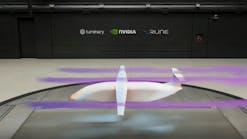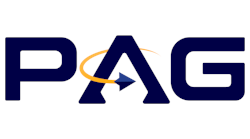When the Federal Aviation Administration enacted rules on widespread fatigue damage (WFD) and the commercial use of older airplanes, it gave MRO managers insight into the structural performance testing that takes place before components ever see a flight line.
By and large, OEMs conduct these tests in controlled environments — big spaces where individual pieces and joints are methodically subjected to both nondestructive testing (NDT) and teardown over an extended period of time.
It’s a different situation for MRO applications. An inspection for surface and sub-surface cracks, corrosion, impact damage, and other irregularities on in-service aircraft has to be fast and accurate without having to dismantle components or increase downtime.
NDT has been an important tool in aircraft MRO going back decades, but it’s a broad category of inspection techniques. For operations that contract NDT services or perform their own tests, it’s critical to understand the different NDT techniques typically used for aircraft MRO.
Penetrant Testing
Liquid penetrant testing (PT) remains one of the most common nondestructive methods to identify surface-breaking defects and discontinuities in metal and other nonporous materials. PT involves applying a colored liquid and allowing it to be drawn into minute surface openings by capillary action. Defects become visible under UV light or by the contrasting color of the dye being used.
Magnetic particle testing (MT) uses magnetic fields to locate surface and near-surface discontinuities in ferromagnetic materials. Very fine ferromagnetic particles are applied to the metal and are drawn into discontinuities on the surface, which indicate the presence of defects to the technician.
PT and MT are generally considered affordable and effective NDT techniques but each has its limitations. PT testing can only detect surface cracks and requires the purchase, handling, and disposal of chemicals. MT testing is effective only on ferromagnetic materials. Both techniques — including surface prep and cleanup — are time consuming and test results can vary depending on the skill and patience of the inspector, especially when the work environment is hazardous, uncomfortable, or hard to reach.
Eddy Current Testing
Eddy current testing (ECT) is a nondestructive technique that’s capable of detecting surface and sub-surface defects including cracks, corrosion, and heat damage in conductive materials with a high degree of precision while at the same time producing a digital record of the results. In aviation, ECT is used to inspect skins, stringers, frames, rivet holes, tubing, and many other ferrous and nonferrous components. A good example of this technique is the inspection of a fuselage lap splice.
In simple terms, a probe or coil applies an electromagnetic field to metal which swirls through the material in loops, like eddies in a river. Any cracks or changes in thickness or metallurgical structure will distort the flow; these distortions are captured and analyzed by an instrument and displayed for the technician to review.
Factors other than flaws can affect the response from a probe, including the conductivity and permeability of the metal and the geometry (edges and curves) of the piece being inspected.
Under comparable conditions and with a skilled technician, single-coil eddy current testing and PT will produce comparable pass/fail-type results. However, a handheld eddy current tool with a C-scan display can present a digital “big picture” and help inspectors find more defects in less time. The NDT industry’s more advanced instruments can conduct dual-frequency testing, digital conductivity testing, and nonconductive coating thickness measurement, and can also generate digital records for advanced analysis and reporting.
The choice of probe is also important. There are eddy current probes for specific aircraft applications like rivets, lap splices, and welds. For example, a dedicated bead seat probe lets users inspect the bead seat on a wheel with only one pass.
Multi-Coil Arrays
Multi-coil arrays take eddy current technology many steps further.
Array probes have multiple coils in the same probe assembly, positioned at longitudinal, transverse, or off-axis orientations and firing at coordinated times. With an array probe, users can capture more information in a single pass, and dramatically increase the speed, accuracy, and repeatability of nondestructive tests, especially on large inspection areas. The inspection changes from a manual process that lasts several minutes to a more automated one that takes seconds.
Today the market is shifting toward multi-coil probes that can be used in a range of applications, which makes them feasible for anyone who wants faster, more accurate inspections.
Take, for example, a simple weld. If the average PT inspection on a 1-foot section of weld takes 30 minutes not including cleanup, the same inspection with a single-coil eddy current probe would take less time but still require the technician to scan the weld multiple times with a probe in order to complete the job.
With an advanced handheld multi-coil probe and an NDT instrument, the technician could scan the body of the weld, toes, and heat-affected zone all in one pass. The entire scan might take less than three minutes, with a higher probability of detection.
Composites
Defects in carbon fibre-reinforced plastics (CFRP) and other composite materials tend to be more complex than those in metal.
With composites, cracks can occur on the surface or beneath the surface — and in different layers or plies — with no predictable orientation. De-lamination defects can occur and propagate quickly especially in components where a laminate is loaded through the thickness, like at spar or stringer runouts. Furthermore, failure can be sudden and catastrophic with no warning or obvious signs of fatigue.
Adding to the challenge, composite components tend to be large pieces with complex shapes and varying thicknesses.
Phased-array ultrasonic testing (UT) is the preferred NDT inspection method for composite materials. A phased-array UT instrument generates pulses of high-voltage electricity which are converted to high-frequency ultrasonic energy by a transducer. The transducer emits pulsed sound waves into the material at precise intervals and set angles. When these ultrasonic waves encounter a defect or discontinuity, some of that energy is reflected back from the flaw surface like an echo.
A dedicated probe configuration, a high-performance phased-array UT instrument, and advanced software can deliver accurate, detailed results about the depth and size of flaws in composite materials quickly without special skills or robotics.
Because some sort of coupling agent (typically water or a gel) is required between the probe and surface of the part to guarantee a high-quality reading, phased-array UT is more common for OEM applications. However, given the increasing use of composites and the effectiveness of phased-array UT on these materials, MRO managers and NDT technicians should become familiar with this technique. Its aircraft maintenance and repair applications are bound to grow.
Although materials and components evolve, fatigue cracks and corrosion will continue to be threats to aircraft reliability and uptime. High-quality inspection and NDT testing serves as the first line of defense to identify problems so users can make informed decisions and timely repairs in the maintenance bay.
Daniel Richard is technology manager at Zetec Inc., a global leader in nondestructive testing technology for aerospace, oil and gas, power generation, and other industries. Zetec is based in Snoqualmie, WA.





